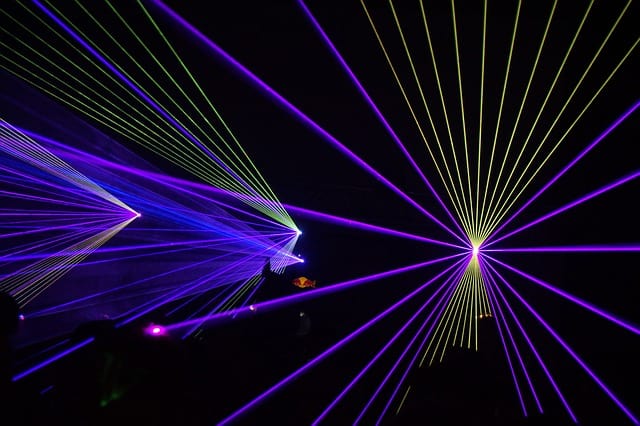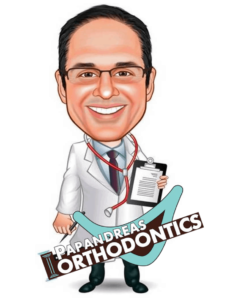Laser-assisted orthodontics. The first laser was used roughly fifty years ago. Currently, there numerous types of lasers available for the field of orthodontics. They are effective for hard and soft tissue applications. The specific use of the laser is determined by the wavelength and power of each laser. Orthodontists use lasers to avoid bleeding, for the non-invasive nature and to perform procedures faster. In many cases, lasers are pain-free. In this post, we’ll show you what lasers can do for your oral health. Let’s get cracking.

Image by Andi Spörl from Pixabay
Laser-Assisted Orthodontics
- Thousands of lasers can produce ultraviolet, infrared and visible wavelengths. The lasers used for orthodontics usually have a wavelength between 488 and 10,600 nm. Although laser-assisted orthodontics is still fairly new, the capability range is expanding. Orthodontists began using lasers because they are easy to use and extremely efficient. One of the most frequently used lasers is the diode.
- Diode lasers have numerous benefits for both soft and aesthetic tissue procedures. Some of the procedures lasers are used for include pain management after tooth movement, bracket debonding, enamel etching, the removal of soft tissue, periodontal treatment, treating decayed teeth and teeth whitening. The procedures performed most often are improving gingivitis by removing the gum tissue, enabling the correct placement of brackets through the removal of extra tissue and treating impacted teeth.
Impacted Teeth and Excess Tissue
- Healthy gums are important for both your teeth and your smile. Once you have had orthodontic treatment, there may be extra gum tissue remaining. Lasers improve your aesthetics and establish the correct gingival height for a better smile. Lasers also provide invaluable assistance for the orthodontist when restorative or cosmetic dentistry is necessary. The laser procedure for removing soft tissue is stable, precise and predictable.
- If you have extra gum tissue or an impacted tooth, lasers provide your orthodontist with access so your brackets can be placed correctly. This means the care you are receiving is both more precise and efficient. Due to the laser, all you need for the removal of extra tissue is a topical anesthetic. This eliminates the need for you to have an injection. This is especially important if you have a fear of needles.
Laser-Assisted Periodontal Treatment
- Lasers are being used for periodontal treatments. This is a lot more effective than either scaling or root planing. Lasers assist in the reduction of bacteria, removing infected damaged or dead tissue and biostimulation. Scaling is a procedure for removing plaque and calculus from the surface of your roots. If you require a root canal procedure, lasers help your orthodontists see disinfection and canals.
- Lasers offer versatility for dental procedures. Due to new technology, lasers have significantly improved over the past two decades. This is the reason lasers have become more flexible and effective for modern orthodontic practices.
Oral Hygiene
- If you have not practiced good oral hygiene, you may be experiencing issues. This can include a build-up of plaque, the formation of a pseudo-pockets due to gingival inflammation or excess gum tissue growing around your teeth. Lasers provide your orthodontist with a better ability to access these issues and improve your overall dental health.
Pain Management
- If your mouth has been open for a lengthy period of time due to dental treatment, you may develop certain issues. This includes TMJ symptoms, earaches, myofascial pain and stiffness in your jaw. LLLT (low-level laser therapy) can effectively decrease inflammation and pain in your temporomandibular joint. This type of laser therapy is effective for pain management because it regenerates both blood vessels and damaged nerves.
Using Lasers for Dental Fillings
- You and your children can now have simple cavities treated without the need for any anesthetic. The main cause of panic when visiting an orthodontist is a fear of needles. Not only do lasers eliminate the need for you to deal with a needle, but your procedure will be much faster. The majority of patients do not feel anything when the laser is being used.
- You may feel cold water being sprayed on your teeth, but this is much better than the pain often resulting from a needle. Your tooth will be disinfected using a laser prior to your filling being placed. This decreases the chance you will experience decay in the future, reduces sensitivity and increases the strength of the bond.
The Importance of Laser Sweeps for Root Canal Therapy
- When you have a root canal, your orthodontist is cleaning out the infected or damaged areas of your tooth. This includes your blood vessels, dentin, pulp and nerves. If your tooth becomes significantly decayed or you develop an infection, you will most likely experience pain. Your pain is relieved by having a root canal. You may also be saving your tooth from the need for an extraction.
- To ensure your root canal is successful, the toxins and bacteria located inside of your tooth must be removed. The laser used for this procedure is often the Fotona Lightwalker laser. The reason is this laser can effectively perform sweeps without damaging the structure of your tooth. This means your orthodontist can effectively clean your microscopic canals to make certain your seal is complete.
The Benefits of Laser-Assisted Orthodontics
Lasers offer you numerous benefits for a wide range of orthodontic procedures. This includes:
- Significantly less pain
- Quicker healing
- Less anxiety as opposed to a dental drill
- A decreased risk of infection
- Preserving your tooth when a cavity is being filled
- The use of anesthesia is decreases
- Decreased bleeding and swelling when your soft tissue is being treated
Future Technologies for Laser Orthodontics
- Lasers have become a permanent part of modern orthodontics. Lasers have improved oral hygiene, the efficiency of the dental practice and aesthetic finishing. There is no longer any doubt lasers are an important part of the future. Orthodontic lasers are becoming more and more popular withing the dental field. Lasers have issued dentistry into the future due to the technology now available.
- The range of lasers available is consistently increasing. This means lasers can be used for more dental procedures as time passes. This enables the orthodontist to be more accurate and efficient while effectively increasing your level of comfort.
Conclusion
At Papandreas Orthodontics we pride ourselves on using the knowledge of the most recent and technologically advanced treatment systems available including laser-Assisted Orthodontics. Contact Dr. Papandreas today to discover what you can do for your smile.
- Which tip will you try first???
- Either way, let us know by leaving a comment below right now and continue the conversation.
North Royalton Location
North Royalton, OH44133
tel: 440-582-8585
Curious About Laser-Assisted Orthodontics? | FAST FACTS 2020



